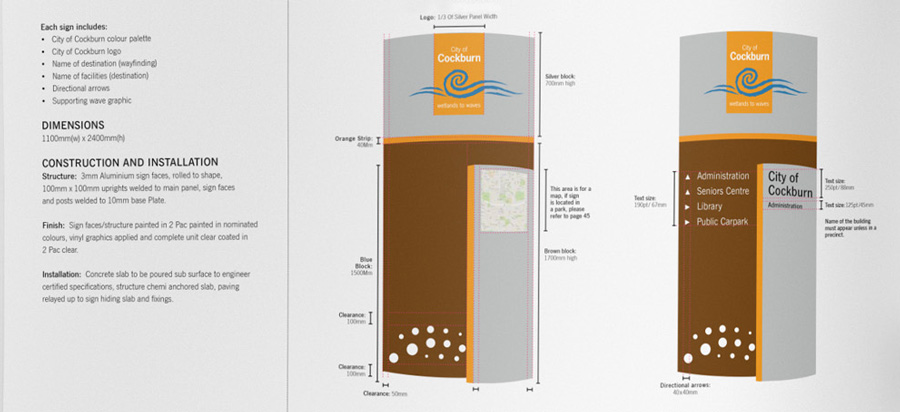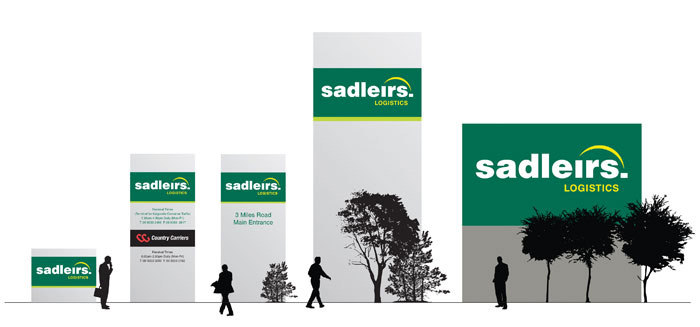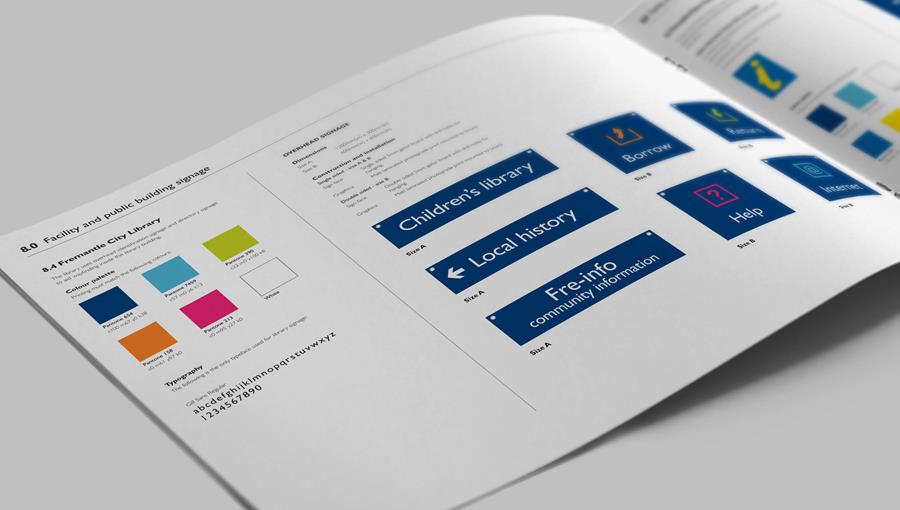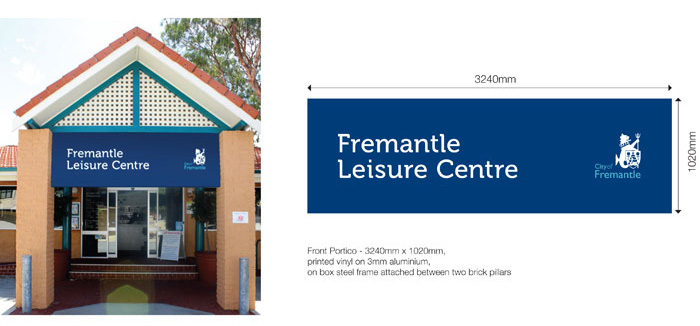What are they and why you need one
Over the years, Wayfound has worked with many local governments who need to improve how they manage and plan their signage. Clear signage is important for safety, wayfinding, amenity and creating a sense of place. Good signage reflects well on the local government and conveys that it cares about the people that live, work and visit it.

Signage represents a significant capital investment for many communities and once it’s installed it is in place for a long time. So, it makes sense to get it right. And this is where investing in a comprehensive Signage Style Guide comes in. It will streamline the design, planning, procurement and installation processes, result in cost savings and ensure your area’s signage is consistent, clear, functional and long-lasting.

Sadleirs external signage concepts – gives an idea of scale, types of signs and materials and it looks good. But, lacks detail about materials, construction, when and where each sign is used …
Buyer beware! A signage style guide has a lot more than vague concepts
We often meet with local government clients who say they have a signage style guide when in reality they have a concept book, which shows how their branding might be applied on signage but gives none of the detail to actually commission a sign to be built and installed.
This is like someone giving you a picture of a cake and asking you to make it with no recipe or instructions. You might be able to give it a go based on experience, what ingredients and equipment you have on hand, what you like to work with, what you have time for – but it’s left up to you to decide. And you might do it quite differently to the next person.
Typically, the concepts have been developed as part of a re-brand of the organisation, especially when a style guide is part of the deliverables. In our experience, many very good brand designers lack the knowledge and skills to deliver a comprehensive signage style guide. So, they deliver concepts and, unless the client knows what a signage style guide should contain, they accept this as the deliverable.
The problems arise when someone decides to have some signs installed. It quickly becomes apparent that there are no material specifications, no engineering drawings or footing specifications. And a lot more work and thinking needs to be done to get to the point where signage can be installed, especially if it needs to be part of a whole system like a local government signage in general.
It is also highly likely that, if the Council goes to a tender or quote stage for the design, supply and install, the signage contractors may all have a different way of doing things. So, how you will know what’s right, what will last, what will be safe and what will be best value for money? A proper signage style guide provides all of these details – so you really can compare apples with apples.

City of Fremantle signage style guide development.

City of Fremantle – even basic panel signs need to be properly specified and signage contractors should refer to the signage style guide.
Think of your signage style guide as your recipe book
Your Signage Style Guide should provide details about all of your signage requirements for staff internally when commissioning signs and for external contractors to manufacture and install any signs.
So what are the ingredients in a good signage style guide?
It specifies how your organisation’s brand will be consistently applied including:
- The colour palette (including Pantone, cmyk & cut vinyl colour matching)
- The materials palette (construction materials – cement, timber, stainless steel, acrylic etc.)
- Typography (the typefaces and sizes used on the signage system)
- Directional information (the directional arrow system & its uses)
- Iconography (the family of icons used e.g. toilets, dogs on lead etc.)
- Mapping (the mapping style used across the signage system)
- Logo usage (how the logo and secondary graphics are allowed to be applied to signage)
It specifies the system and technical requirements.
- Viewing heights & distances (min height for lettering, optimum viewing height for able bodied & disabled)
- Signage overview (the family of signs as developed)
- Signage types & usage (the individual signs in detail – plinths, fingerboards, site identification, trail marker etc.)
- Technical specifications (engineering drawings showing sign construction, dimensions, measurement and materials used)
- Footing & installation instructions (depth & height for concrete foundations and specific instructions for positioning)
- Maintenance (setting up a regular inspection & maintenance schedule)
The signage style guide should allow you to to hand over any signage project and know with confidence that the signage contractor has all the information they need to manufacture and install the sign. It will allow your organisation to plan and manage its expenditure on signage and roll out signage in a coherent, consistent way.
It’s a process, not a project
Once the signage style guide version 1.1 has been delivered, it doesn’t end there, a style guide is a living breathing document. Each year there should be a review of the signage style guide to make any updates and add new signage styles that have been adopted.


